The Advantages of Grinding Your Own Spices
Grinding your own spices has a number of benefits that make it worth considering if you enjoy cooking and are looking for ways to improve the flavor of your dishes. Here are seven reasons why you should consider grinding your own spices:
- Freshness: One of the biggest advantages of grinding your own spices is that they will be fresher than pre-ground spices, which often sit on store shelves for extended periods of time before being purchased. As spices age, they can lose their potency and flavor, so freshly ground spices will be more aromatic and flavorful.
- Customization: Grinding your own spices allows you to customize the coarseness or fineness of the grind to suit your personal preferences or the needs of a particular recipe. This can be especially useful if you are using a recipe that calls for a specific type of grind, such as coarsely ground black pepper for a rub or finely ground cumin for a marinade.
- Cost savings: Grinding your own spices can also be more cost-effective in the long run, especially if you buy whole spices in bulk. Whole spices tend to be less expensive than pre-ground spices, and they have a longer shelf life, so you can stock up and have a supply on hand for grinding as needed.
- Quality control: When you grind your own spices, you have complete control over the quality of the ingredients you are using. You can choose high-quality, fresh spices and avoid any additives or fillers that may be present in pre-ground spices.
- Aromatic oils: Many spices, such as black peppercorns and whole cloves, contain aromatic oils that can evaporate or dissipate over time. Grinding these spices just before use helps to preserve the oils and intensify the flavor.
- Custom blends: Grinding your own spices also allows you to create your own custom spice blends, such as a barbecue rub or a curry powder. This can be a fun way to experiment with different flavors and create your own unique blends.
- Kitchen gadget fun: Finally, grinding your own spices can be a fun and rewarding kitchen gadget to use. There are a variety of spice grinders available, from manual grinders to electric models, so you can choose the option that works best for you.
Grinding your own spices is a simple and easy way to elevate the flavor of your dishes and add a touch of personalization to your cooking. Whether you are a seasoned home cook or just starting out in the kitchen, giving it a try is well worth the effort.
How long do spices last in your spice drawer?
The shelf life of spices varies depending on the type of spice and how it is stored. In general, whole spices have a longer shelf life than ground spices because they have less surface area exposed to the air, which can cause them to lose their potency and flavor over time.
Here are some general guidelines for the shelf life of common spices:
- Whole spices (such as whole peppercorns, whole cloves, and whole coriander seeds): up to 1 – 2 years
- Ground spices (such as ground pepper, ground cinnamon, and ground cumin): 6 months to 1 year
- Dried herbs (such as dried basil, dried oregano, and dried thyme): 6 months to 1 year
It’s important to store spices in a cool, dry place away from direct sunlight to help prolong their shelf life. It’s also a good idea to keep them in airtight containers to protect them from moisture and to prevent them from absorbing any odors from other foods.
If you are not sure how long a spice has been in your spice drawer, you can test its potency by rubbing a small amount between your fingers and taking a sniff. If the spice has lost its aroma or has a musty or stale smell, it’s probably time to replace it.
What are the best ways to grind spices?
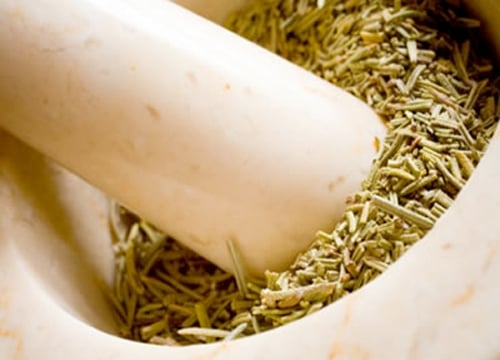
There are a few different ways to grind spices, depending on your personal preferences and the tools you have available in your kitchen. Here are some options for grinding spices:
- Mortar and pestle: A mortar and pestle is a traditional tool for grinding spices and is still a popular choice for many home cooks. It consists of a bowl-shaped mortar and a heavy, blunt pestle that is used to grind the spices by hand. This method can be time-consuming, but it allows you to control the fineness of the grind and provides a good workout for your arm muscles.
- Electric spice grinder: An electric spice grinder is a convenient option for grinding spices quickly and easily. These grinders typically have a small chamber for holding the spices and a motor-driven blade that grinds the spices into a fine powder. Electric spice grinders are easy to use and can handle a variety of spices, but they can be more expensive than other options and may not be suitable for grinding larger spices or whole spices.
- Coffee grinder: A coffee grinder can also be used to grind spices, as long as it is dedicated to that purpose and has not been used for grinding coffee beans. A coffee grinder will typically have a small chamber for holding the spices and a motor-driven blade that grinds the spices into a fine powder. This method is quick and easy, but it may not be suitable for grinding larger spices or whole spices.
- Manual grinder: A manual grinder, also known as a hand crank grinder, is a traditional tool for grinding spices. These grinders typically have a small chamber for holding the spices and a crank handle that is used to turn a grinding mechanism, which crushes the spices into a fine powder. Manual grinders are typically less expensive than electric grinders and can be a good option for those who prefer a more traditional or low-tech approach to grinding spices.
The best way to grind spices will depend on your personal preferences and the tools you have available in your kitchen. Some people prefer the manual control and rustic charm of a mortar and pestle, while others prefer the convenience and speed of an electric spice grinder. Experiment with different methods to find the one that works best for you.
Some Great Spice Blends You May Enjoy
Garam Masala
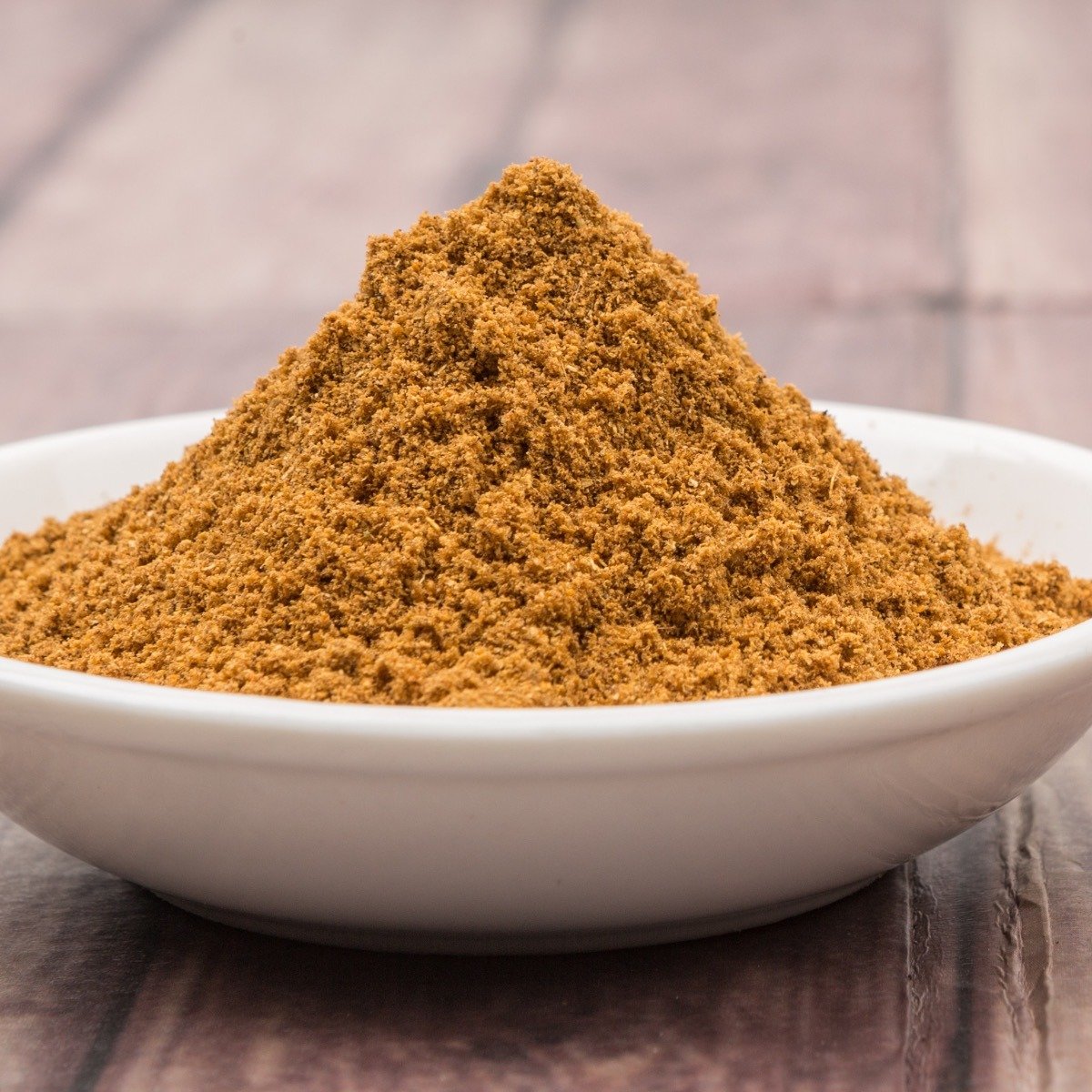
Garam masala is a popular spice blend used in Indian cuisine. It typically consists of a mixture of ground spices such as cardamom, cinnamon, cumin, coriander, and pepper. The exact recipe for garam masala can vary depending on the region or personal preference, but here is a simple recipe that you can try at home:
Ingredients:
- 2 tablespoons cumin seeds
- 1 tablespoon coriander seeds
- 1 tablespoon cardamom seeds (from about 15 pods)
- 1 tablespoon black peppercorns
- 1 cinnamon stick, broken into pieces
- 2 whole cloves
- 1 teaspoon fennel seeds (optional)
Instructions:
- Combine the cumin seeds, coriander seeds, cardamom seeds, peppercorns, cinnamon stick, and cloves in a small pan over medium heat. Toast the spices, stirring frequently, until they are fragrant and lightly toasted, about 3-5 minutes.
- Remove the pan from the heat and let the spices cool for a few minutes.
- Transfer the toasted spices to a spice grinder or a mortar and pestle. Grind the spices until they are finely ground. If using a mortar and pestle, you may need to grind the spices in batches.
- Stir in the fennel seeds, if using.
- Transfer the ground spice blend to an airtight container and store in a cool, dry place until ready to use. The garam masala can be used immediately or stored for up to 6 months.
Note: This recipe makes about 1/4 cup of garam masala. You can adjust the quantities of the spices to suit your personal preferences or the needs of a particular recipe. You can also vary the types of spices used, depending on what you have available or what you prefer.
Five Spice Blend
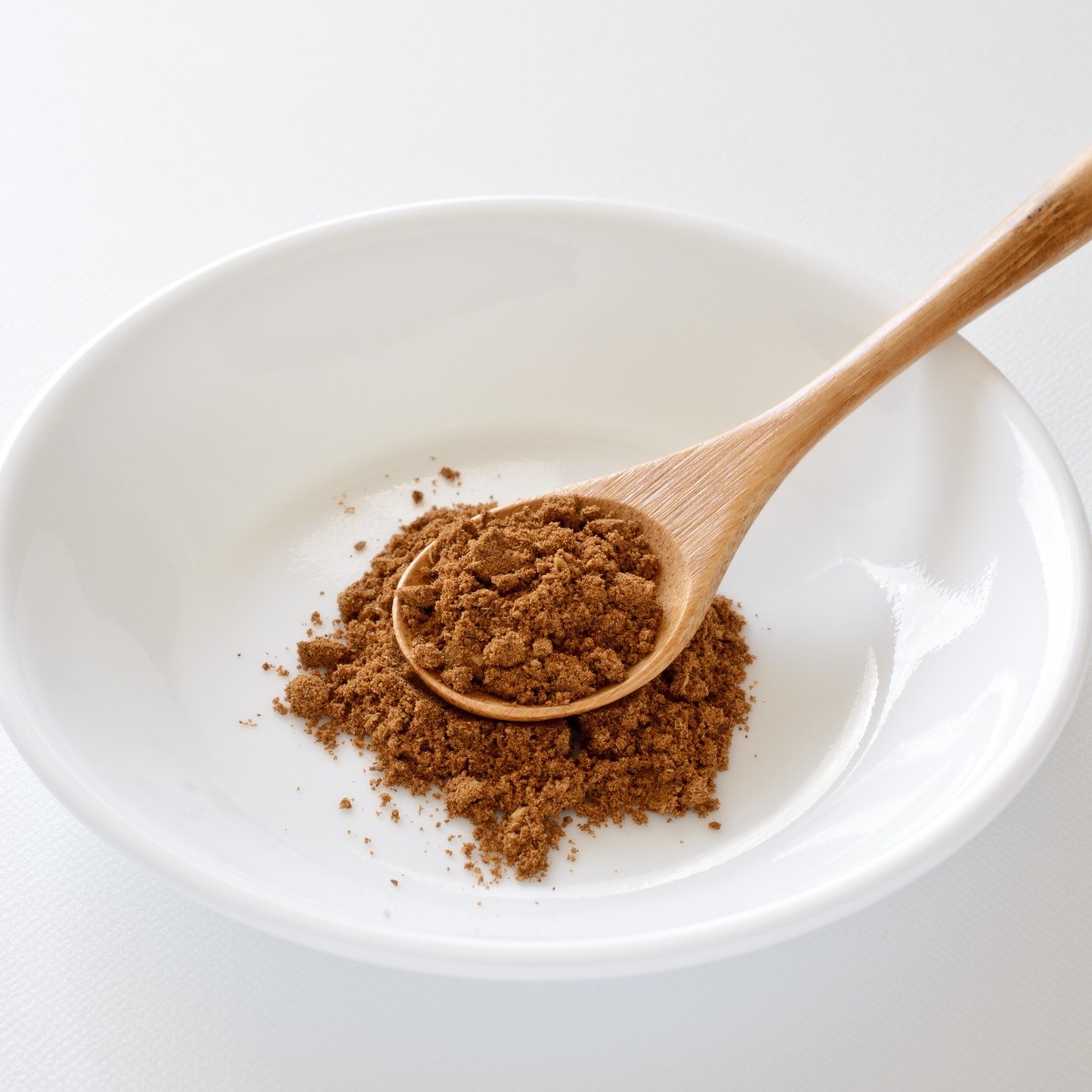
Five spice powder is a blend of spices commonly used in Chinese and other Asian cuisines. It typically consists of a mixture of ground cinnamon, cloves, fennel, star anise, and Sichuan pepper. Here is a simple recipe for making your own five-spice powder at home:
Ingredients:
- 2 tablespoons ground cinnamon
- 2 tablespoons ground cloves
- 2 tablespoons ground fennel seeds
- 2 tablespoons ground star anise
- 2 tablespoons ground Sichuan pepper
Instructions:
- Combine all of the ingredients in a small bowl and stir to mix well.
- Transfer the five-spice powder to an airtight container and store them in a cool, dry place until ready to use. The five-spice powder can be used immediately or stored for up to 6 months.
Note: This recipe makes about 1/2 cup of five-spice powder. If you don’t have Sichuan pepper on hand, you can omit it or substitute it with another type of pepper, such as black pepper or white pepper.
Baharat
Baharat is a Middle Eastern spice blend that is commonly used to flavor meat, poultry, and vegetables. It typically consists of a mixture of ground spices such as black pepper, cardamom, cinnamon, coriander, cumin, paprika, and cloves. The exact recipe for Baharat can vary depending on the region or personal preference, but here is a simple recipe that you can try at home:
Ingredients:
- 2 tablespoons black peppercorns
- 2 tablespoons cardamom seeds (from about 15 pods)
- 2 tablespoons cinnamon sticks, broken into pieces
- 2 tablespoons coriander seeds
- 2 tablespoons cumin seeds
- 2 tablespoons paprika
- 2 teaspoons whole cloves
Instructions:
- Combine the peppercorns, cardamom seeds, cinnamon sticks, coriander seeds, cumin seeds, paprika, and cloves in a small pan over medium heat. Toast the spices, stirring frequently, until they are fragrant and lightly toasted, about 3-5 minutes.
- Remove the pan from the heat and let the spices cool for a few minutes.
- Transfer the toasted spices to a spice grinder or a mortar and pestle. Grind the spices until they are finely ground. If using a mortar and pestle, you may need to grind the spices in batches.
- Transfer the ground spice blend to an airtight container and store in a cool, dry place until ready to use. The Baharat can be used immediately or stored for up to 6 months.
Note: This recipe makes about 1/4 cup of Baharat.
Berbere Blend
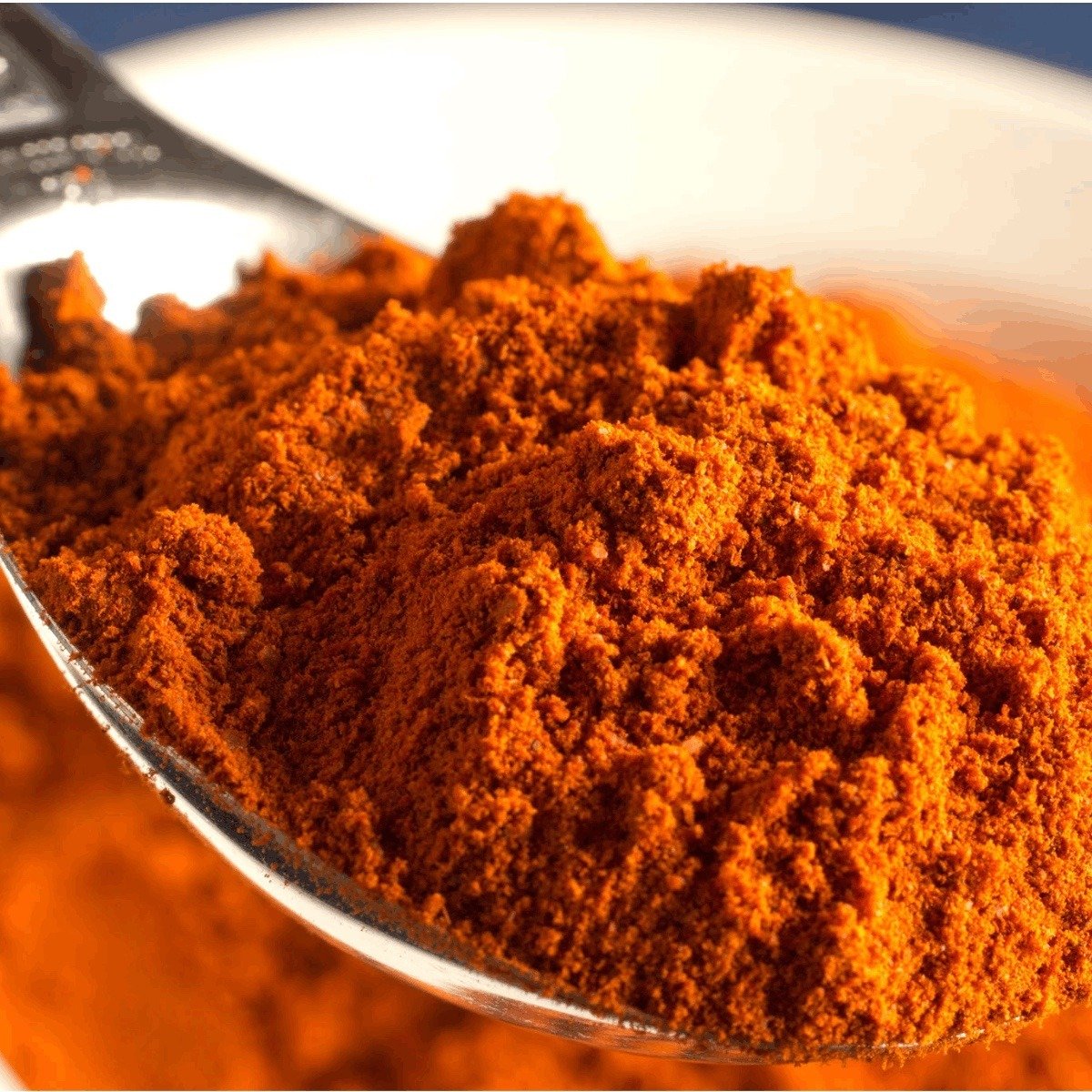
Berbere is a spice blend used in Ethiopian and Eritrean cuisines. It typically consists of a mixture of ground spices such as chili peppers, paprika, garlic, coriander, fenugreek, and ginger, as well as whole spices such as cardamom, cinnamon, and cloves.
Ingredients:
- 2 tablespoons chili peppers, dried and ground
- 2 tablespoons paprika
- 2 tablespoons garlic powder
- 2 tablespoons ground coriander
- 2 tablespoons ground fenugreek
- 2 tablespoons ground ginger
- 1 tablespoon ground cardamom
- 1 tablespoon ground cinnamon
- 1 tablespoon ground cloves
Instructions:
- Combine all of the ingredients in a small bowl and stir to mix well.
- Transfer the Berbere spice blend to an airtight container and store in a cool, dry place until ready to use. The Berbere can be used immediately or stored for up to 6 months.
Note: This recipe makes about 1/2 cup of Berbere. If you don’t have all of the spices on hand, you can omit them or substitute them with similar spices, such as cumin for coriander or nutmeg for cardamom.
Shichimi Togarashi Blend
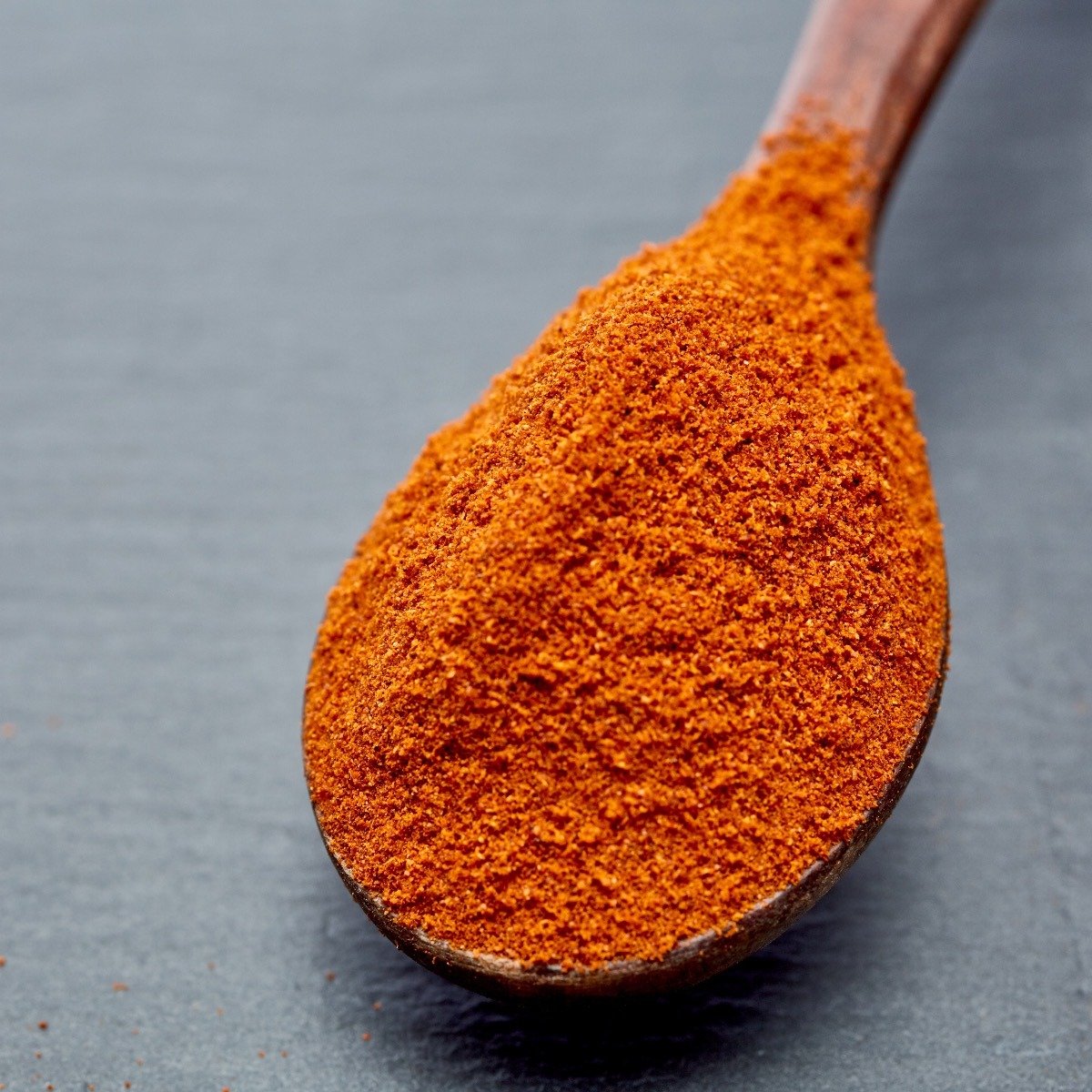
Shichimi Togarashi is a Japanese spice blend that is often used to add flavor and heat to soups, noodles, and other dishes. It typically consists of a mixture of ground spices such as chili pepper, orange peel, and sesame seeds, as well as whole spices such as poppy seeds and sansho pepper. Here is a simple recipe for making your own Shichimi Togarashi at home:
Ingredients:
- 2 tablespoons chili pepper flakes
- 1 tablespoon ground orange peel
- 1 tablespoon white sesame seeds
- 1 tablespoon black sesame seeds
- 1 tablespoon poppy seeds
- 1 tablespoon ground sansho pepper
- 1 teaspoon ground ginger
Instructions:
- Combine all of the ingredients in a small bowl and stir to mix well.
- Transfer the Shichimi Togarashi spice blend to an airtight container and store it in a cool, dry place until ready to use. The Shichimi Togarashi can be used immediately or stored for up to 6 months.
Note: This recipe makes about 1/2 cup of Shichimi Togarashi. If you don’t have all of the spices on hand, you can omit them or substitute them with similar spices, such as cumin for sansho pepper or coriander seeds for poppy seeds.
Jerk Seasoning
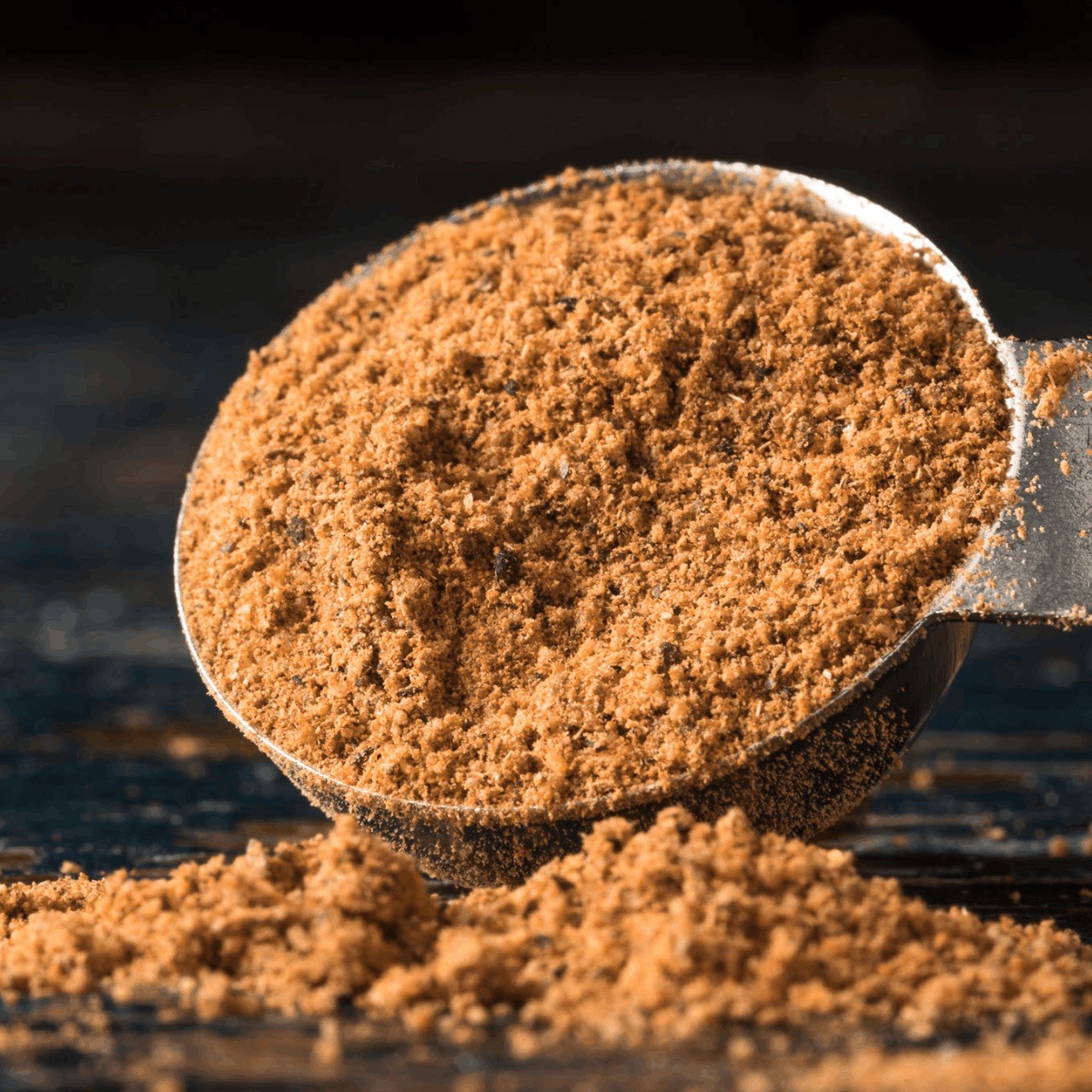
Jerk seasoning is a spice blend commonly used in Jamaican cuisine to flavor meats, such as pork and chicken. It typically consists of a mixture of ground spices such as allspice, thyme, and cinnamon, as well as whole spices such as scotch bonnet peppers and cloves. The exact recipe for jerk seasoning can vary depending on the region or personal preference, but here is a simple recipe that you can try at home:
Ingredients:
- 2 tablespoons ground allspice
- 2 tablespoons dried thyme
- 2 tablespoons ground cinnamon
- 2 tablespoons ground black pepper
- 1 tablespoon ground nutmeg
- 1 tablespoon ground ginger
- 1 tablespoon ground scotch bonnet peppers (or other hot pepper)
- 1 tablespoon whole cloves
Instructions:
- Combine all of the ingredients in a small bowl and stir to mix well.
- Transfer the jerk seasoning to an airtight container and store in a cool, dry place until ready to use. The jerk seasoning can be used immediately or stored for up to 6 months.
Note: This recipe makes about 1/2 cup of jerk seasoning. If you don’t have all of the spices on hand, you can omit them or substitute with similar spices, such as cumin for allspice or paprika for scotch bonnet peppers.

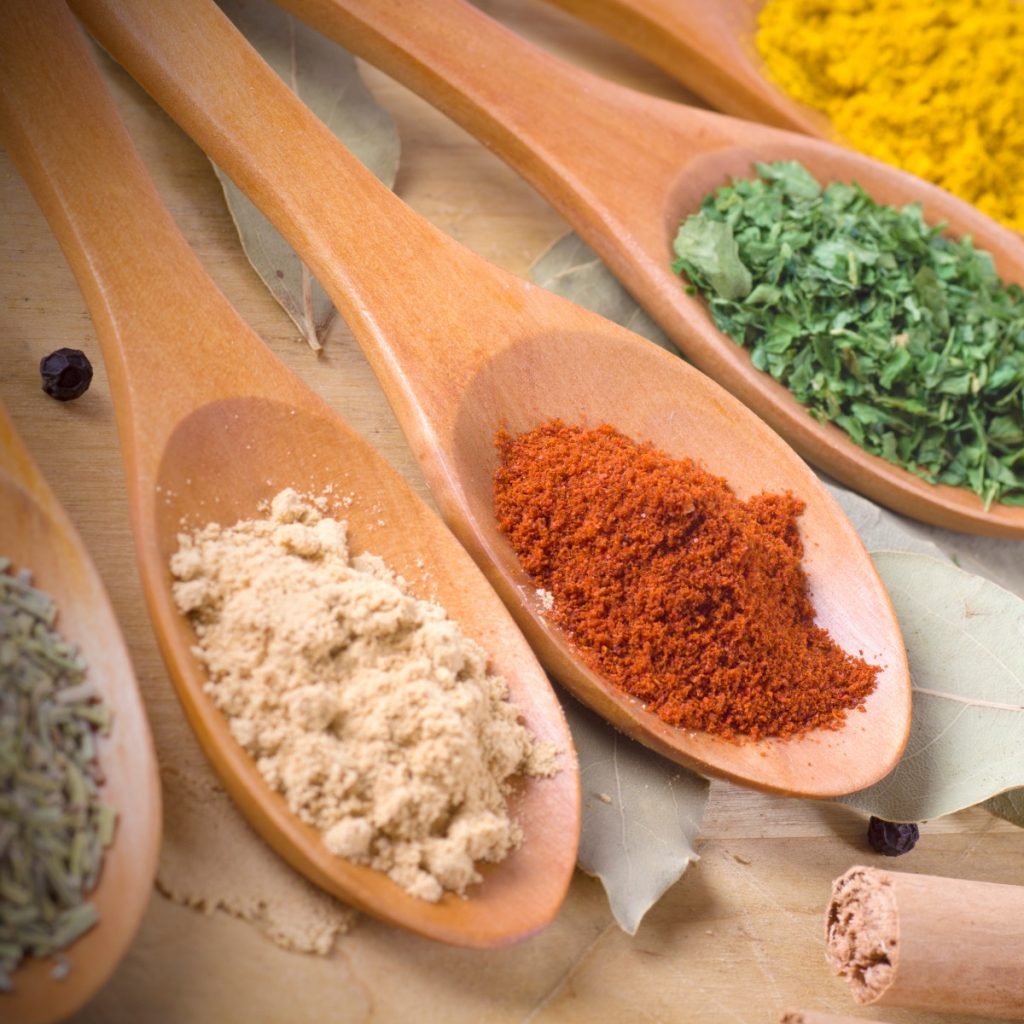
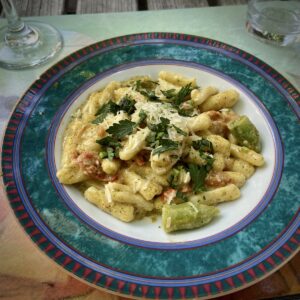
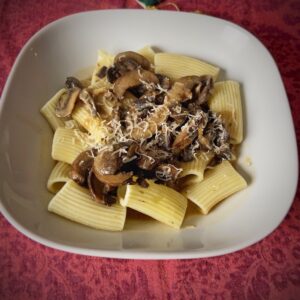




7 Responses
Does grinding basil diminish its flavor in a slow cook such as spaghetti sauce. What about rosemary? Or does it matter at all? Why are some spices sold whole and not ground. If I seem confused-you’re right. Thanks RV
Great question Roger so I asked my friend Chef Jenni for her opinion and here is what she said:
I think that many herbs are sold ground because the whole ones might not be so attractive. Looks aside, some herbs lose potency quickly when dried and ground. Basil is one of them. I guess the oils are particularly volatile. I almost always try to find fresh basil if I’m going to use it. If my only option is dried, I opt for a high quality Italian herb blend which includes basil but also some more assertive herbs such as oregano and rosemary.
It’s also worth noting the difference between an herb and a spice. Generally speaking, herbs are leaves and spices are seeds (or bark, in the case of cinnamon). For example, cilantro is a leafy herb and coriander is what we call the seeds (at least in the US. It’s true that learning about herbs and spices can be confusing, especially when we start throwing around differences between different countries). Whole spices will last longer than dried, so if you have the option, buy whole and grind when you need them.
I’m in the process of buying a spice mill. I found one that has a grinder with six attachable components. Each component contains a different spice to be ground. What spices are there to grind besides salt and pepper? I’m not a chef, just a fellow that has made a hobby of cooking.
Hi James, all the spices mentioned in the article above.
Hey James, Im really keen to get me that 6 attachment grinder! Do you know the company name or website! Cheers!
Is there a difference when a recipe says “1 tsp xxx, ground” vs “1 tsp ground xxx”…do I first measure out 1 tsp of that ingredient then grind it, or do I grind it first then measure out 1 tsp?
Hi Bonnie, if a recipe says 1 tablespoon of ground cumin, I would grind it and then measure it out.